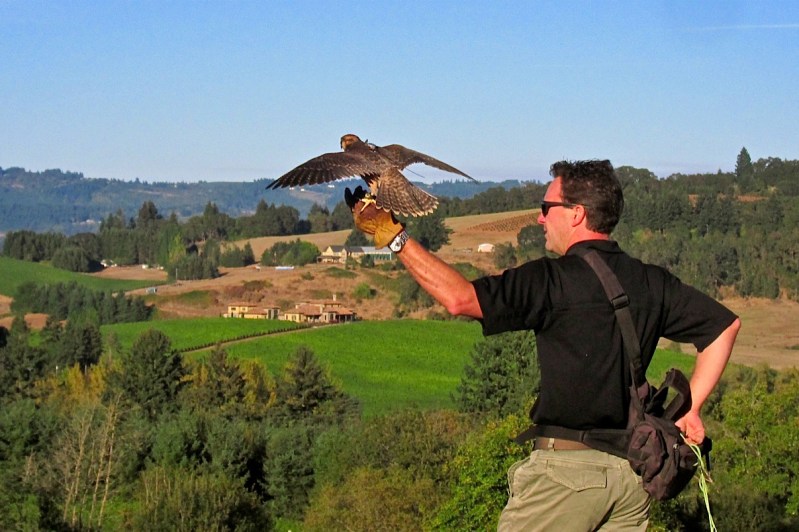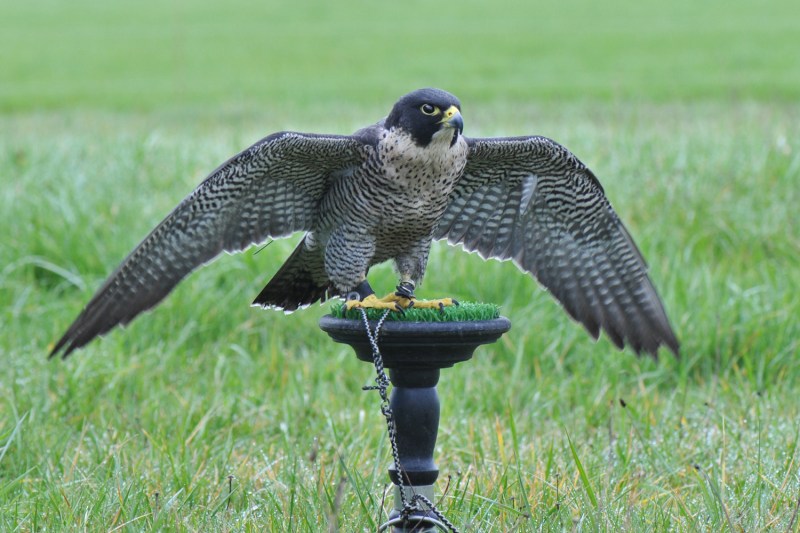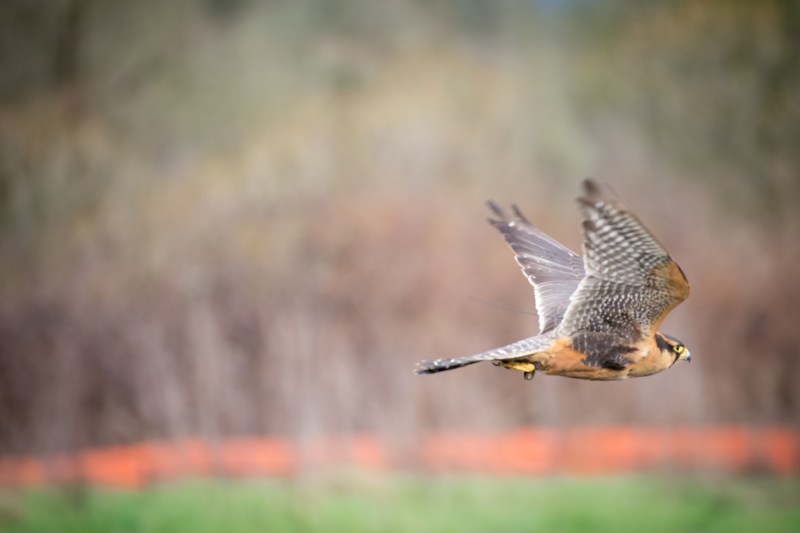
We’ll come right out and say it: Of the many drinks industry professions one could pursue, falconer is arguably the coolest. The name alone seems reserved for some fantastic all-knowing superhero. It’s not a character type you’re likely to run into very often, but they play an important role, especially in vineyards come late summer and early fall.
Harvest time is a glorious stretch of fresh-hop beers, fresh and vibrant wines, and agricultural camaraderie. It’s also a pensive, tension-filled time involving serious decisions about when to pick fruit and how best to ferment it. And as the grapes ripen and sugar levels rise, flying pests begin scheming up ways of feasting on your favorite vineyard block.
Enter the falconer. The hero arrives in style, sporting a beautiful bird of prey on their shoulder or thickly gloved hand. The bird, often a kestrel, peregrine falcon, or some species of hawk, is highly trained. It’s released in the vineyard and it begins patrolling as it spirals above the ripening fruit, scaring the crap out of hungry birds like finches and starlings. It’s mostly scare tactics, but the predatory birds will pick off a smaller flying snack now and again.

It’s a majestic site and one that occurs naturally in many wine country environments thanks to an abundance of hawks, owls, eagles, and more. But with harvest on the line, some estates simply need a little extra protection from grape thieves. There are other means — propane cannons, reflective tape, netting, recorded bird sounds, parading through the vineyard with a shotgun — but none is more romantic than falconry.
“It’s so effective and silent,” says Nadine Lew of Soter Vineyards. She’s the Willamette Valley winery’s ranch manager. “And there are no demands on my team to mess with nets or deterrents when I need everyone focused on harvest.” She adds that it’s fun for guests to witness and doesn’t offer the eyesore — or earsore — that other methods tend to provide. Plus, it’s just plain effective.
“We do love having the falconer and his falcons here,” she continues. “He knows where the birds like to hang out, knows where there might be some damage, and is really effective at flushing them off of the property.” Presently, the falconer is targeting cedar waxwings. With harvest kicking into full gear in Oregon and elsewhere in the west, it’s showtime in the vineyard. That translates to frequent falconer visits, about every other day during the heat of the crush.

Historically, the act likely began in Mongolia some 4,000 years ago. It eventually spread to Europe, popularized as a means of hunting game. Guns ultimately rendered the falconer far less useful and toward the end of the 18th century the practice really fell off. But it remains a useful tool for wine growers especially. And as we continue to covet natural solutions, there’s a decent chance it will grow in popularity, even if only slightly.
In addition to vineyard and agricultural work, falconers also find gigs in sprawling metropolitan areas. They’re called in to scare off everything from pesky defecating pigeons in town squares or other public areas to crows and gulls in dumps and recycling centers. Airports are also known to dial up their local falconer, looking to clear the jetway of unwanted and potentially disastrous bird encounters.
But it’s before a backdrop of vines where the birds seem most at home, chasing away harvest headaches for grateful winemakers.
Editors' Recommendations
- Yes, you can live on a vineyard — check out these dream homes for sale
- Bud Light, White Claw, and Dunkin’ Donuts are about to go to war in the spiked drinks category (seriously)
- The 7 best wines to drink this Easter: Elevate your holiday meal
- What Sommeliers are Drinking at Home
- You Can Now Drink Booze at Select IHOPs


